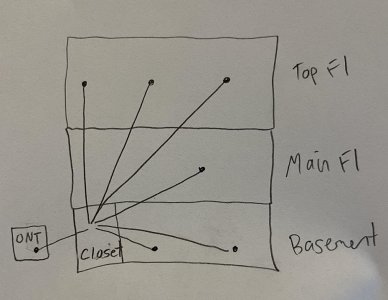aunsafe2015
Occasional Visitor
2x Asus AX86U Pro. It's been a decade or more since I've owned Asus equipment so just want to double check my planned setup. On the "operation mode" tab, I'm planning to configure the first unit (basement closet where internet comes into the house) just as a "Wireless router mode / AiMesh Router mode (Default)," and then manually disable wifi broadcast on all channels for that unit. I'm planning to configure the second unit (centrally located main level and hardwired to first unit via cat 6) as an "Access Point (AP) mode / AiMesh Router in AP mode" and of course broadcast wifi from that unit.
Can anybody confirm that's the best setup for my use case? I've read about repeater mode, media bridge mode, and AiMesh node mode, and those options do not seem to be what I want.
Thanks!
Can anybody confirm that's the best setup for my use case? I've read about repeater mode, media bridge mode, and AiMesh node mode, and those options do not seem to be what I want.
Thanks!
Last edited:


